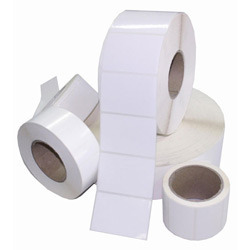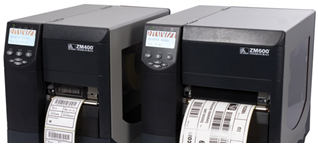
by Administrator | Nov 1, 2012 | Uncategorized
Datamark See The Benefits of New Wide Web Plain Label Convertor Having run their new Plain Label Converting press for a few months now, it can be safely said that Datamark UK are seeing the benefits of this new investment. Plain labels can be produced much wider and more labels across the web than previously Datamark were able to handle which is seeing benefits for both Datamark and clients in production time and capacity. Labels can be wound onto cores down to 19mm with the use of Turret re-wind capability. With the increasing demand for small rolls of labels for Portable Printers requiring 19mm cores Datamark look forward to increased demand for this...

by Administrator | Jul 10, 2012 | Uncategorized
The new ZT200 series offers outstanding performance and features rarely found in such an affordable printer. Built for light industrial and commercial environments the ZT200 Series is ideally suited for use in environments such as manufacturing, transportation and logistics, healthcare, retail, and government. · Max print width 104mm · Labels per day 2500 · 203 or 300dpi · Serial, USB standard connectivity · Optional Parallel, Ethernet, Wireless · Max print speed 152mm/s · Plastic/metal construction (ZT220) · Metal construction (ZT230) · 128MB Flash, 128MB RAM · Peel and cut media handling options · Additional liner and rewind media handling options (ZT230...
by Administrator | Jun 21, 2012 | Uncategorized
New wide web plain label converting equipment with inline turret rewind Datamark UK have now taken delivery of their new Wide Web Converting Press the Daco PLD 330 The Daco PLD 330 offers all the benefits of turret rewinding but with very quick make ready times unlike conventional rewinding. This allows runs to be produced both quickly and more efficiently. The Daco 330 is a very efficient rotary die cutter with a semi-automatic turret rewinder for small roll production. Unlike traditional die cutters, where the machine is stopped for a considerable time whilst operators cut and re-apply the web to the cores, the semi-automatic turret is only stopped for a few seconds whilst the turret indexes. New cores are applied to the rewind shaft whilst the machine is in production; the turret automatically cuts the web and applies the web to the new cores. This equipment will further enhance Datamark’s capability for producing price competitive plain labels with rapid turnaround ensuring we maintain our competitive advantage. Initial manufacturing runs have proved extremely successfull and show just how competitive we will be for Plain Label requirements – Give us a call now for quotes on +44 (0)1482 506560 or (0)1482 505101, fax us on +44 (0)1482 504758 or email us...
by Administrator | Jun 1, 2012 | Uncategorized
Toshiba TEC Launches DB-EA4D 2-Sided Printer Toshiba TEC have recently launched their new DB-EA4D thermal label printer. The first of a new series, the DB-EA4D can print directly onto a label’s backing paper, increasing usability without effecting functionality. Not only does the printer add value, but it also reduces waste and is ideal for applications requiring dual output, providing an efficient alternative to single sided solutions – perfect for the transport and logistics industry. The DB-EA4D is a two-sided thermal label printer which allows printing on the front and reverse of labels or tickets in one pass. This new printer utilises two thermal printheads and with a maximum print speed of 6″ per second still produces a fast output of media. The DB-EA4D prints text, graphics, barcodes and QR codes on labels and tickets, in roll, fan-fold and cut-sheet media formats. Specifically, shipping labels can be used for service logistics, E-Commerce companies and food & beverage manufacturing. Event ticketing is for ticketing centres such as theatres, and tag printing can be used in retail stores, service logistics, and clothing stores. With an impresive two-sided print quality and print speed, this machine with an exceptional build quality is what you would expect from TEC, and comes with the integrated LAN interface as a standard feature. Two-sided direct thermal media is available in both economy and top-coated grades. The DB-EA4D comes with BarTender as standard and with the option to download enhanced software, customers are able design bespoke labels to meet their own specific business requirements. Optional extras include a paper roll holder that gives the printer greater flexibility. To find out more about...

by Administrator | May 8, 2012 | Uncategorized
What are QR and Microsoft Tag Codes? A QR Code is basically a barcode but with the ability to store so much more data. They’re used for encoding information in two-dimensional space – like on packaging and labels, shop displays, printed and billboard displays, pages of magazines or papers, in advertisements, even on TV and Web sites. They were first developed to track auto parts, but have become increasingly popular (especially in Japan) for much broader and wider commercial purposes. How are they different to a barcode? Barcodes encode data in only the horizontal plane as scanners read the width and distance between the vertical lines, QR codes encode data both vertically and horizontally in a grid of small squares. This enables more data to be encoded into smaller spaces. Barcodes, then, though seemingly everywhere, are good for not much more than identifying products and objects. Special scanners can read barcodes, match them to names of products, prices and inventory, but that’s about their limit. QR codes, however, can actually embed that information in the code itself and when read with the relevant software, can launch a website or download a file. Additionally, QR codes are able to be read from any angle, while barcodes must be aligned correctly. So what exactly can I do with QR and Microsoft Tag Codes? QR codes are tailor-made for quick and easy linking to content on smartphones. More simple uses include magazine ads that link to company websites. Putting the codes to more complex use, android uses QR codes to directly link to apps in the android marketplace and the municipality of Bordeaux...







